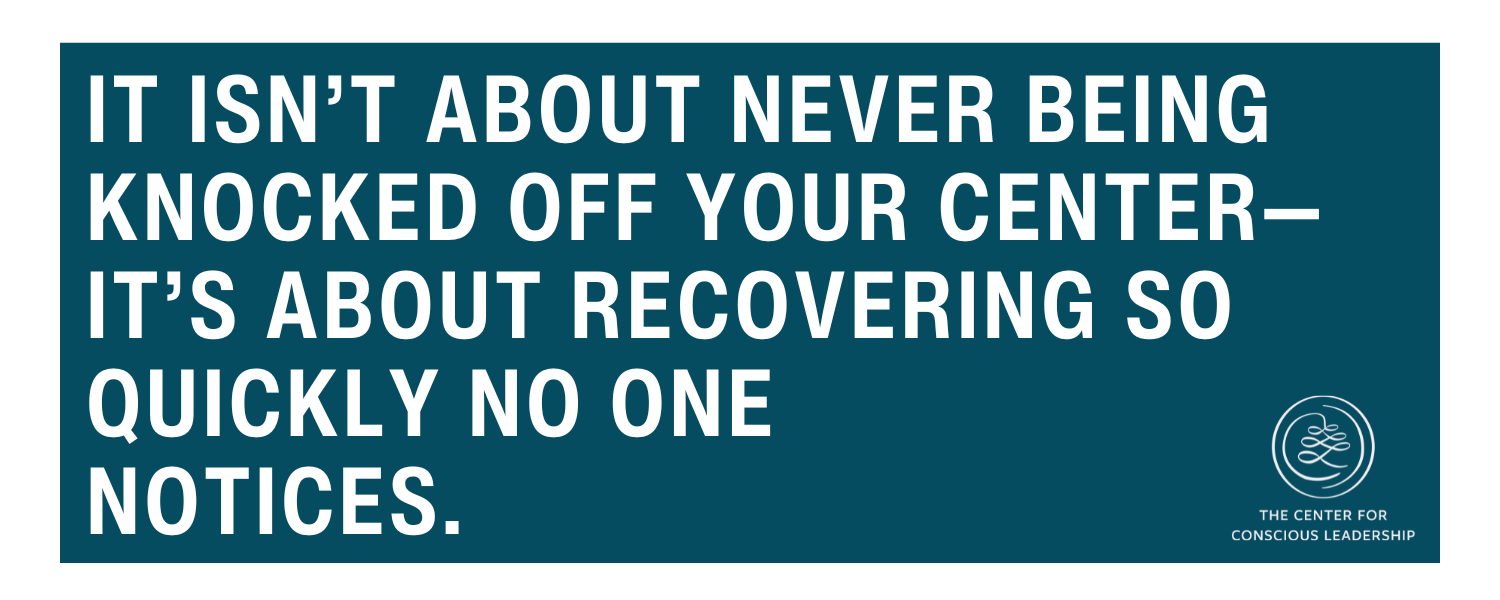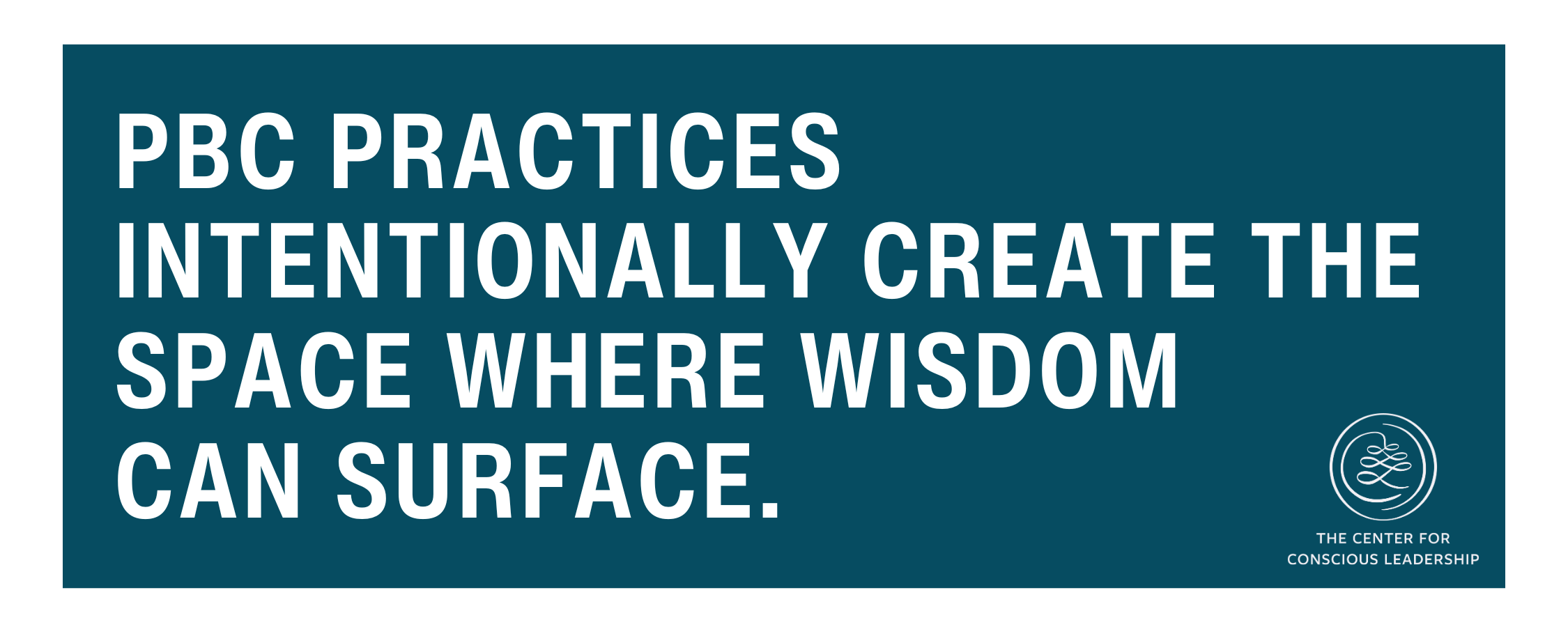PBC: The Three-Second Leadership Practice That Changes Everything
You don’t need more time. You need more pause.
In one education agency we worked with, directors began every day with a barrage of stress. Before the day could even start, the flood hit: teacher call-outs, parent concerns, students in crisis. Their bodies went into overdrive, racing to solve each new problem. Every interaction compounded the experience, threatening to pull them into reactivity.
But here’s the truth: in every interaction, they also had a choice.
To stay grounded and use each experience to deepen connection and solve problems collaboratively, or to let stress take over, creating friction, fraying trust, ruptured relationships, and amplified chaos.
And this isn’t unique to education. Every leader knows this moment: A tense meeting. A critical email. A frustrated team member. The heart rate spikes, the jaw tightens, and before you even speak, you feel the room shifting in response.
What happens next isn’t just about what you say. It’s about how you show up—and how you make your team feel.
Why PBC Matters
Most leadership breakdowns aren’t due to a lack of skill or strategy—they’re due to nervous system dysregulation. When your body shifts into defense, so does your leadership.
But as the Dalai Lama once reflected, composure isn’t about never being knocked off your center—it’s about recovering so quickly no one notices. And as Viktor Frankl taught us, between stimulus and response lies a space—our power to choose. PBC helps leaders find that space in real time.
Developed from the science of Polyvagal Theory and tested in some of the most complex and high-stakes environments—like under-resourced schools, government systems, and executive teams—PBC is a three-second practice that shifts how you lead in real time.
It stands for Pause, Breathe, and Choose.
Pause – Interrupt the autopilot. Take in everything that’s happening.
Breathe – Signal safety to your nervous system.
Choose – Respond from clarity and conviction, not conditioning.
This micro-practice activates your body’s inherent regulating system, moving you away from fight/flight and into connected presence.
This is where intentional leadership begins.
The Science Behind PBC
PBC is backed by neuroscience and trauma-informed leadership frameworks.
Polyvagal Theory, developed by Dr. Stephen Porges. This theory explains how our nervous systems constantly process information to determine whether we’re safe or under threat. Deep, slow, controlled, rhythmic breaths signal to our bodies that we’re safe and help us stay connected to the people around us.
Window of Capacity: Originally developed as the Window of Tolerance by Dr. Dan Siegel, and reframed as the Window of Capacity by Linda Thai, this concept describes the sweet spot where we are able to both tap into our logic brain and feel a wide range of emotions without becoming overwhelmed or shutting down. When you pause to regulate, you stay within your optimal range for connected decision-making.
Neuroplasticity: Repeated use of PBC builds leadership habits that reinforce calm, presence, and conscious choice, even in times of chaos. The more we reinforce these skills, the more quickly they are available to us, and the easier they will be to reach for in the future.
These aren’t just mindfulness tips. They’re strategic interventions rooted in how human systems work.
The PBC Practice
The power of PBC isn’t in its singular use during conflict, it’s in the repetition over time that becomes a practice. Using the practice regularly retrains your nervous system, interrupting old reactive patterns, and replacing them with conscious choices. It helps your system consistently choose connection over self-protection, presence over pressure, and responsiveness over reactivity.
If you want to bring trauma-informed leadership into your daily rhythms, intentionally begin with PBC in the moments that matter most:
Before a high-stakes meeting. Take a few moments to ground and center yourself. Choose how you want to show up.
In the middle of conflict. Instead of reacting, interrupt the feedback loop. PBC gives you a doorway back to presence.
At the end of the day. Ask yourself: When did I lead from reactivity? When did I lead from choice?
These practices intentionally create the space where wisdom can surface.
When leaders choose pause over impulse, breath over tension, and clarity over control, they don’t just change their next decision—they change the emotional tone of the system around them. This is what conscious leadership looks like in practice: regulation that ripples outward into trust, presence, and possibility.
This is how systems begin to shift.
Case in Action: How Schools in Crisis Use PBC
When we introduced PBC to a partner organization where leaders were navigating daily conflict, staffing shortages, and rising community tensions, the impact was immediate. Instead of escalating or shutting down, leaders began using PBC in the moment: before tough conversations, during crisis responses, and even proactively at the start of their day.
Within just a few days, senior leaders reported calmer teams, fewer escalations, and faster repair. Nothing about the external chaos changed, but how leaders showed up to it did. That made all the difference.
The difference wasn’t in the demands placed on them; it was in how they met those demands. PBC gave leaders a tool to anchor themselves in the middle of uncertainty, transforming crisis management into conscious leadership.
Why This is Trauma-Informed Leadership
Every pause is a signal to your nervous system: we are safe enough to stay present and connected.
When we don’t pause, our patterns and habits control the room. We prioritize urgency, and react instead of respond. And when leaders lead from urgency, fear, frustration, or reactivity—even subconsciously—they create teams that mirror their stress. The result is escalated conflicts, decision fatigue, and cultures with constant burnout.
The real work of conscious leadership is to meet emotions–both ours and others–with awareness and connection so others can stay connected, too. To respond in a way that allows everyone to stay safe, engaged, and within our windows of capacity.
And that’s the foundation of trauma-informed leadership—where calm becomes contagious, presence is proactively co-regulating, and humanity becomes the strategy.
Ready to Become a Trauma-Informed Leader?
If you’re ready to make the shift to lead from a regulated, grounded presence that changes the emotional climate of your team—let’s talk.
We help leaders practice trauma-informed leadership that starts in the body and ripples outward into culture.
Book a call to explore trauma-informed leadership coaching or team workshops that start with the nervous system and lead to real transformation.
The world we’re building requires leaders who are conscious, connected, and trauma-informed.
At The Center for Conscious Leadership, we help executives and organizations evolve—integrating neuroscience, trauma-informed leadership, and systems thinking to create cultures that heal and perform.
If you’re ready to build the future with us, explore our Trauma-Informed Leadership Program or connect to learn more about our coaching and systemic work.




